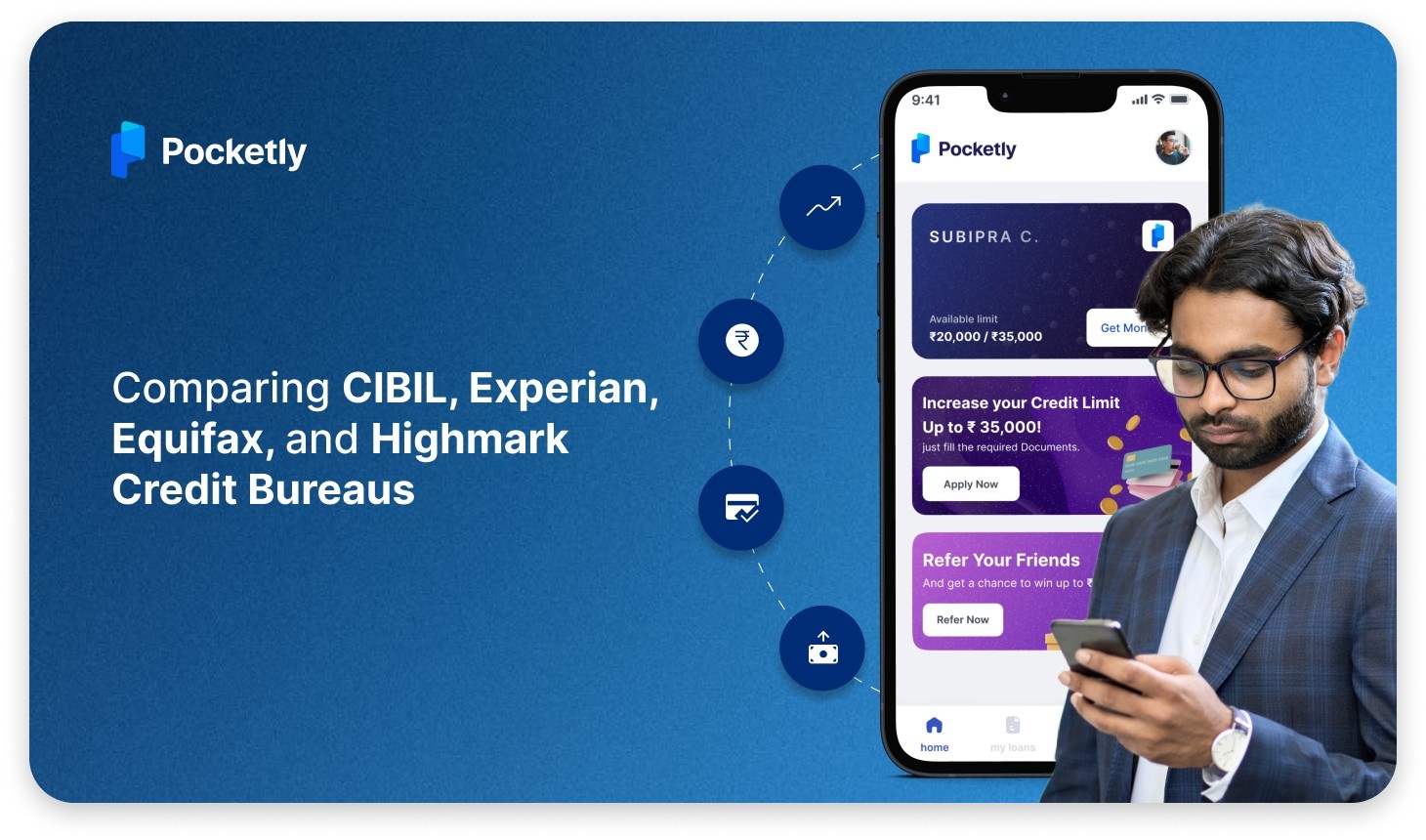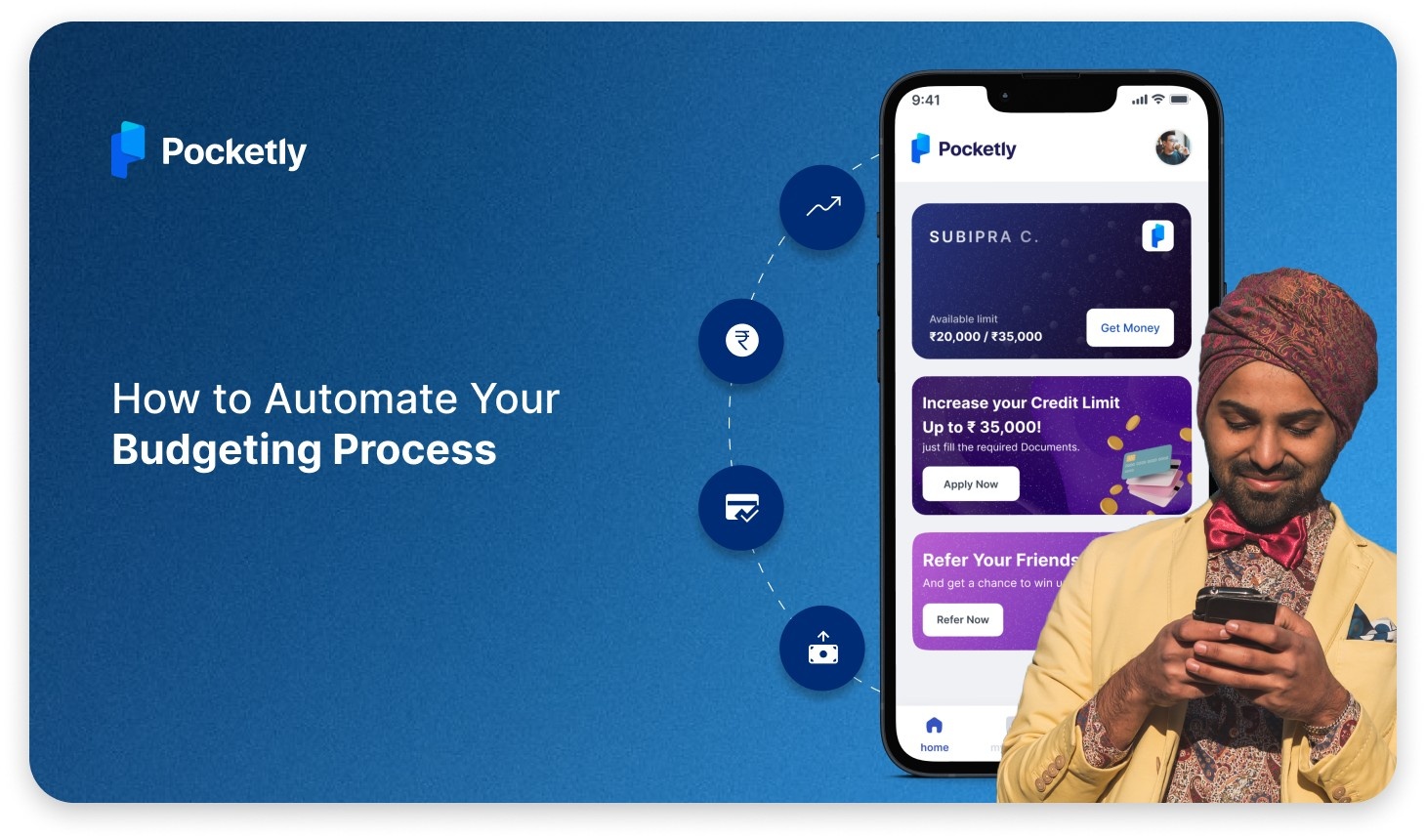
Unexpected expenses! A word, enough to crush a long-lived financial dream for an individual. Over 60% of young professionals in metro cities struggle with month-end cash shortages.
But here’s the catch: how you handle these expenses depends on whether you’re managing your own money (personal finance) or running a business (private finance). Mixing the two can lead to costly mistakes, like taking the wrong type of loan or missing out on tax benefits.
Knowing the difference helps you choose the right financial tools, protect your credit score, and stay in control, no matter what life throws at you. Ready to learn how? Let’s dive in and make sure you’re prepared for any financial curveball!
What is Private Finance
Private finance means managing money for yourself or your business without involving the government or public markets. It includes things like how you save, spend, borrow, or invest your own money or your company’s funds. It’s all about making smart money decisions to help your personal wealth or business grow.
Unlike big banks or public loans, private finance often gives you more flexibility and options that fit your specific needs.
Roles: It covers the basics like setting aside money for the future, making sure your business keeps running smoothly, and growing your personal wealth. Whether you’re working out how to pay for college or figuring out how to expand your startup, private finance plays a big part.
Key Areas for Private Finance
- Income Management: Planning and managing all sources of income, such as business revenue, investments, or personal earnings, to ensure financial stability and growth.
- Expense Control: Tracking and controlling spending on both personal and business needs, making sure outflows do not exceed inflows.
- Savings: Allocating financial resources for prospective requirements, unforeseen emergencies, or scheduled investments. This could be personal savings or business reserves.
- Investments: Allocating money to assets like stocks, bonds, real estate, or business ventures to grow wealth over time.
- Risk Management: Protecting against financial losses through insurance, emergency funds, or hedging strategies.
- Borrowing and Lending: Accessing loans or providing credit to others, including private loans, peer-to-peer lending, or business credit facilities.
- Tax Planning: Optimising tax liabilities by making informed decisions about income, expenses, and investments.
- Wealth Preservation and Growth: Ensuring long-term financial health by balancing current spending with future planning and asset appreciation.
For individuals and businesses seeking quick funding, exploring instant personal loan options online can provide fast approval and minimal paperwork.
Now that we’ve looked at private finance, let’s shift gears and talk about something you deal with every day: personal finance.
What is Personal Finance
Personal finance encompasses the planning, organising, directing, and controlling of an individual's or a family's financial resources to achieve economic well-being and financial security. It covers everything from your monthly budget to your long-term goals, like buying a home or retiring comfortably.
Key Areas of Personal Finance
- Income: This is the foundation, money you earn from your job, investments, or side hustles. Knowing your income helps you plan your budget, savings, and investments.
- Spending (or Budgeting): Tracking and managing your expenses is crucial. This includes everything from rent and groceries to entertainment. Creating a budget can really empower you to live within your means and steer clear of unnecessary debt. It's a great way to take control of your finances!
- Saving: Setting aside money regularly for emergencies, future goals, or big purchases. Savings act as a safety net and provide peace of mind during unexpected events.
- Investing: Growing your wealth by putting money into assets like stocks, mutual funds, or real estate. Investing helps your money work for you and beat inflation over time.
- Protection (Insurance & Estate Planning): Safeguarding yourself and your family from financial risks through insurance, emergency funds, and proper estate planning. This ensures you’re prepared for life’s uncertainties.
- Debt Management: Managing loans and credit responsibly, paying off high-interest debts first, and avoiding excessive borrowing to maintain good financial health.
- Retirement Planning: Preparing for your future by saving and investing specifically for retirement, so you can maintain your lifestyle when you stop working
Maintaining a healthy credit profile is essential for you to get a loan in future. Learn effective strategies to boost your CIBIL score to 900 and secure better loan terms.
Private Finance and Personal Finance may sound similar at first glance, but they serve very different purposes. Let’s break down their core differences and how they apply to different financial planning needs.
Comparisons Between Private Finance and Personal Finance
When it comes to managing finances, private finance and personal finance serve very different purposes, each requiring distinct approaches. Understanding the differences between the two is essential for making informed financial decisions, whether you're handling your own money or overseeing a business.
1. Scale of Activity
Private finance deals with a broader scope, covering both individual and business financial activities. It includes managing everything from a small business’s cash flow to large corporations’ capital investments.
This sector involves a variety of financial operations, whether they concern an individual not associated with public entities or a multi-million-dollar enterprise.
In contrast, personal finance is solely focused on an individual or household’s financial management. It involves planning, budgeting, and managing personal money for things like savings, expenses, and financial goals.
While it’s more about personal wealth, the principles and practices can be similar to private finance, but on a much smaller scale.
2. Objective
The goal of private finance is wealth maximisation for individuals or businesses. For businesses, the focus is on increasing firm value, ensuring long-term growth, and capital efficiency.
Business owners, executives, and investors look at ways to maximise profitability and strategically position the company in its industry.
For personal finance, the main objective is more about securing financial stability and personal wealth accumulation. Goals here include achieving life milestones, like buying a home, funding education, or preparing for retirement.
The focus is on ensuring financial security and planning for both immediate and long-term needs.
3. Budget Management Practices
When it comes to budget management, private finance deals with larger, more complex budgets. Businesses allocate significant resources toward planning for the future. This involves strategic planning, collaborating with stakeholders, and ensuring that the budget aligns with the company’s goals.
Transparency and regular reviews are key to adapting to business changes and maintaining accountability.
Personal finance is simpler and revolves around creating a budget that aligns with individual income and expenses. Many individuals use tools like the 50/30/20 rule (50% needs, 30% wants, 20% savings/debt repayment) to stay on track.
People regularly monitor their spending and adjust their budgets as life circumstances evolve, whether it’s a change in income or new goals like saving for a vacation or emergency fund.
4. Investment and Savings Strategies
In private finance, businesses focus on large-scale investments to increase firm value. This could mean expanding operations, acquiring new assets, or investing in research and development to stay ahead of competitors.
Risk management is crucial here, as poor investment decisions can affect a company’s profitability and long-term stability.
Personal finance, on the other hand, revolves around saving and investing for personal wealth. Individuals tend to use savings accounts, retirement funds (like 401(k)s), mutual funds, and stocks to grow their wealth.
Here, it’s about balancing risk and reward—building a secure financial future while planning for emergencies and investing for retirement or other life goals.
5. Revenue Sources
Private finance primarily generates revenue through business operations like sales, services, and investments. Large businesses often diversify their revenue streams, whether through new product lines, service offerings, or strategic investments. The goal is to ensure a stable and growing revenue base from various sources.
Personal finance is usually driven by income from salaries, wages, and personal investments. Some people may have secondary income sources like rental properties, side businesses, or freelance work, but the scale and complexity are much smaller compared to business finance.
6. Financial Planning and Goals
Private finance focuses on long-term strategic planning for business growth, profitability, and sustainability. Companies aim to increase market share, enhance operational efficiency, and create long-term strategies that ensure profitability.
The goals here revolve around expanding the business, improving market positioning, and staying competitive.
In personal finance, the focus is more on individual goals. These might include saving for big purchases, like a home or funding education. It also involves ensuring long-term financial security through retirement planning.
Additionally, emergency savings are a crucial part of the plan. Personal finance also emphasises managing debt, protecting against risks through insurance, and setting both short-term and long-term objectives.
Understanding cash inflow and outflow is crucial for both private and personal finance, as it directly impacts your ability to plan and achieve financial goals.
While private finance and personal finance share the common thread of financial management, their goals, scale, and methods differ significantly. Private finance is more focused on business operations, long-term growth, and wealth maximisation at an organisational level.
Personal finance, on the other hand, centres around achieving personal milestones, managing household expenses, and securing a stable financial future.
Here is a summary table of comparison:
| Aspect | Private Finance | Personal Finance |
|---|---|---|
| Scale of Activity | Business and individual | Strictly individual/household |
| Objective | Business growth, profit, and capital management | Wealth accumulation, financial security |
| Budget Management | Large-scale, strategic, stakeholder-driven | Personal budgeting, simple frameworks |
| Investment Strategies | Business investments, firm value growth | Savings, retirement, and personal investing |
| Revenue Sources | Business operations, investments, and loans | Salaries, personal investments, and savings |
| Financial Planning/Goals | Growth, profitability, sustainability | Education, home, retirement, emergencies |
Whether you’re managing a business or your own household, the tools and services you choose can make a significant difference.
Challenges in Managing Private and Personal Finance
Managing your personal finances isn’t always easy. Many people face common hurdles that can make it tough to stay on track. Let’s break down some of the biggest challenges you might encounter:
- Struggling with Financial Basics
A lot of people find it hard to grasp key financial concepts like budgeting, credit scores, or how investing works. Without this knowledge, it’s easy to make mistakes or miss out on opportunities to grow your money. The good news? Learning about money doesn’t have to be complicated, and even small steps can make a big difference.
- Dealing with Debt
Debt can quickly become overwhelming, especially when it comes with high interest rates like credit cards or student loans. When you’re paying off debt, it’s harder to save or invest, and the stress can really add up. Managing debt well means you can free up more money for the things that matter most.
- Not Having Enough Savings
Without a safety net, unexpected expenses-like car repairs or medical bills-can throw your finances off balance. Many people don’t have enough saved to cover emergencies or long-term goals, which puts them at risk when life throws a curveball.
- Rising Costs Eating Into Your Budget
Prices for essentials like housing, food, and healthcare keep going up, often faster than wages. This means you might find it harder to save or invest because more of your income goes toward day-to-day expenses. It’s a tough squeeze that many people feel.
- Feeling Pressure to Keep Up
Social media and societal expectations can push you to spend more than you should, just to keep up with friends or trends. This “keeping up” mindset can lead to overspending and debt, making it harder to build real financial security.
- Handling Unpredictable Income
If you work freelance, gig jobs, or have an irregular paycheck, budgeting becomes a challenge. When your income fluctuates, it’s tough to plan for bills or save consistently, which adds stress and uncertainty to your financial life.
These challenges are very real, but they’re also manageable. With the right knowledge, tools, and habits, you can take control of your finances and build a stronger, more secure future.
Key Things to Consider in Your Finance Management
Managing your finances effectively requires a strategic approach. Regularly monitoring your credit, investing wisely, and adjusting your plan as needed will help you secure financial stability and achieve long-term success. Here are key things to consider:
- Create and Stick to a Budget: Track income and expenses, categorise spending, and use rules like the 50/30/20 method for needs, wants, and savings.
- Set Clear Financial Goals: Define both short-term and long-term objectives, such as building an emergency fund or planning for retirement.
- Build an Emergency Fund: Aim to save at least 3–6 months’ worth of living expenses to cover unexpected costs.
- Manage and Reduce Debt: Prioritise paying off high-interest debts and avoid accumulating new debt unnecessarily.
- Monitor Credit: Maintain a good credit score by making timely payments and checking your credit report regularly.
- Invest Wisely: Diversify investments according to your risk tolerance and financial goals.
- Review and Adjust Regularly: Periodically reassess your financial plan and make changes as your circumstances or goals evolve.
By focusing on these areas, you can overcome common challenges and build a secure financial future.
For personal finance, especially for young professionals facing month-end cash crunches or unexpected expenses, access to flexible and transparent financial solutions is critical. This is where Pocketly stands out as a modern, user-centric option for personal finance needs.
How Pocketly Can Be a Smart Solution for Personal Finance
Pocketly is designed specifically for young Indians. Pocketly offers secure and quick personal loans to help you navigate daily expenses or sudden financial shortfalls.
The app is built with simplicity in mind, sign-up takes just two clicks, and the hassle-free KYC process ensures you can access funds without unnecessary paperwork or delays.
Key Features of Pocketly:
- Flexible loan amounts, starting with a credit limit of ₹1,000 and increasing up to ₹25,000 with timely repayments.
- No physical documents required, making the process fast and convenient.
- Zero annual or joining fees, and no hidden charges.
- Flexible EMI options and 24/7 online support.
- Instant rewards, including up to ₹5,000 cashback on referrals.
- A user-friendly interface to track active loans, due dates, and credit limits directly in the app.
Pocketly has received positive feedback for its minimal fees, reliability, and ease of use. Users appreciate its quick disbursal, transparent terms, and helpful repayment options, making it a trusted companion for managing personal finance challenges.
By integrating Pocketly into your personal finance toolkit, you can handle cash flow gaps smartly, avoid high-interest credit options, and build a positive credit history. This aligns with the core goals of personal finance: maintaining stability, managing debt, and planning for future needs.
To Sum Up!
Managing money well is important, whether it’s for a business or just your personal life. Private finance and personal finance might sound similar, but they serve very different purposes. But both need good planning and smart choices. But no matter which one you’re dealing with, having the right tools makes all the difference.
That’s where Pocketly comes in. It’s a simple, fast, and reliable app that helps you manage your personal finances better. Whether you need a little extra cash to cover unexpected expenses or want to build a good credit history, Pocketly makes borrowing easy and transparent. No complicated paperwork, no hidden fees, just quick access to small loans that fit your needs.
If you want to stay in control of your money and handle financial surprises with confidence, give Pocketly a try. Download the Pocketly app today and take the first step toward smarter, stress-free personal finance!
FAQS
1. What is private finance in simple terms?
Private finance means managing money for yourself or your business without involving the government or public markets. It covers things like saving, investing, borrowing, and spending your own or your company’s money to reach specific goals.
2. How is personal finance different from private finance?
Personal finance is all about handling your own or your family’s money, budgeting, saving, investing, and planning for life goals. Private finance can include personal finance, but it also covers business finances, like managing a company’s cash flow or investments.
3. Can I use the same strategies for both private and personal finance?
Some strategies, like budgeting and saving, work in both areas. But business finances often involve bigger risks, more complex planning, and different tax rules. It’s important to use the right approach for each situation.
4. How can Pocketly help with personal finance?
Pocketly is a handy app that gives you quick access to small personal loans when you need them. It’s great for covering unexpected expenses, managing cash flow, and building a good credit history, all with a simple, transparent process.

















